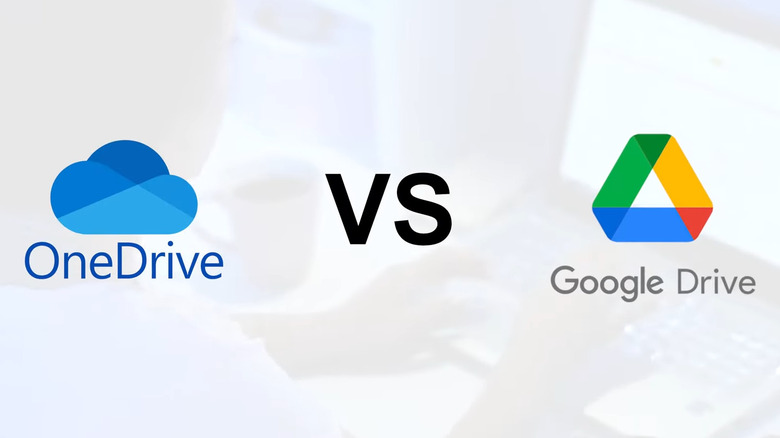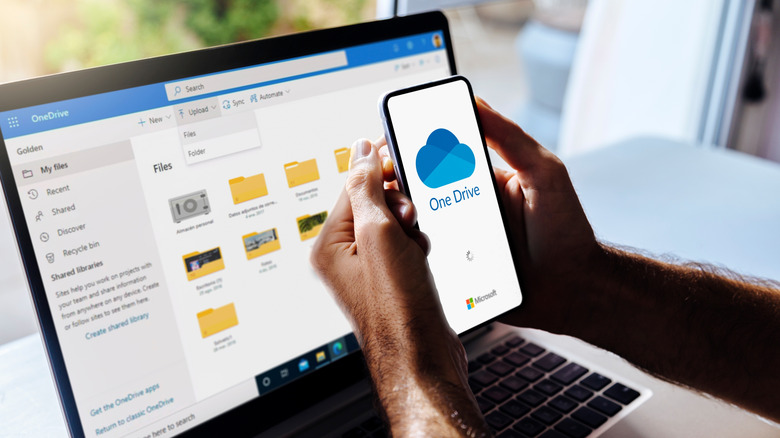Is Microsoft OneDrive A Good Alternative To Google Drive?
The benefits of using cloud storage over local storage are significant. For starters, you can get to your files from just about anywhere. And as long as you've set up account recovery, there's little chance of losing them. But which cloud service should you use? While there are plenty of reliable options out there, Microsoft OneDrive and Google Drive are two of the most popular. That's mostly because of their reliability and wide range of features.
Microsoft OneDrive and Google Drive have a lot in common when it comes to features, ease of use, and security. You can access both services on most operating systems, including Android, iOS, Windows, and macOS. Both of them also offer comparable file-sharing and collaboration options. If you use a premium plan, you get access to AI-powered features through Copilot or Gemini, built into their respective productivity suites.
The biggest difference between the two is how much free storage they offer. Google Drive gives you 15GB of storage, while OneDrive only includes 5GB on its free plan. This, of course, makes Google Drive look like the better choice at first glance. But if you're thinking about upgrading to a paid plan, OneDrive has its advantages, too.
Why Microsoft OneDrive is a better choice
For extra storage on OneDrive, you have to sign up for a Microsoft 365 plan. With Google Drive, additional storage comes through a Google One subscription. Both services offer a basic 100GB plan for $2 per month, so there's no price difference at that tier.
If you're looking for more space, though, Google One has a 2TB plan for $10 a month. For the same amount, Microsoft offers only 1TB of storage. That said, the Microsoft 365 Family plan is a better deal if you plan to share the subscription. For $12.99 a month, you can share the subscription with up to six users, and each person gets their own 1TB of storage. Google One also supports sharing with up to five others, but the 2TB is shared across users.
OneDrive also makes sense if you already use Microsoft Office apps for work or school. That's because a Microsoft 365 Personal or Family subscription includes access to Word, Excel, and PowerPoint. Plus, all your documents are automatically saved to OneDrive. You also get Clipchamp, which is a great video editing tool if you're into that kind of thing.
Choosing OneDrive is also a smart move for Windows users. Once you sign in with your Microsoft account, you can easily back up all your files and manage them through File Explorer. While it's possible to add Google Drive to Windows for a similar setup, OneDrive offers better integration since it's built by Microsoft.
Reasons to use Google Drive
Google Drive isn't a bad option either. In fact, for some, it might make more sense than OneDrive. For instance, if you're sticking with the free plan, Google Drive's 15GB of storage is far more generous. And if you're already into Google's ecosystem and prefer using Gmail over Outlook or Google Docs over Word, using Google Drive makes it easy to manage and share your files.
When you've thousands of files stored in the cloud, a good search function can make all the difference. That's where Google Drive shines with its advanced search filters. For instance, if you search for a document, it also shows files containing the word you searched for, which can be useful when you don't remember the exact file name. In comparison, OneDrive's search feature feels more limited.
Finally, if you mainly want cloud storage for photos and videos, Google Photos is a big plus. It works on Android, iOS and the web, and having a dedicated app just for managing your media makes everything a lot simpler. You also get to use all of Google Photos' best AI features. Microsoft, on the other hand, doesn't offer a separate app for photos and videos, so you have to manage everything through the main OneDrive app.
Ultimately, you really can't go wrong with either service. It mostly comes down to the devices you use, your storage needs, and whether you prefer Microsoft or Google's ecosystem.


